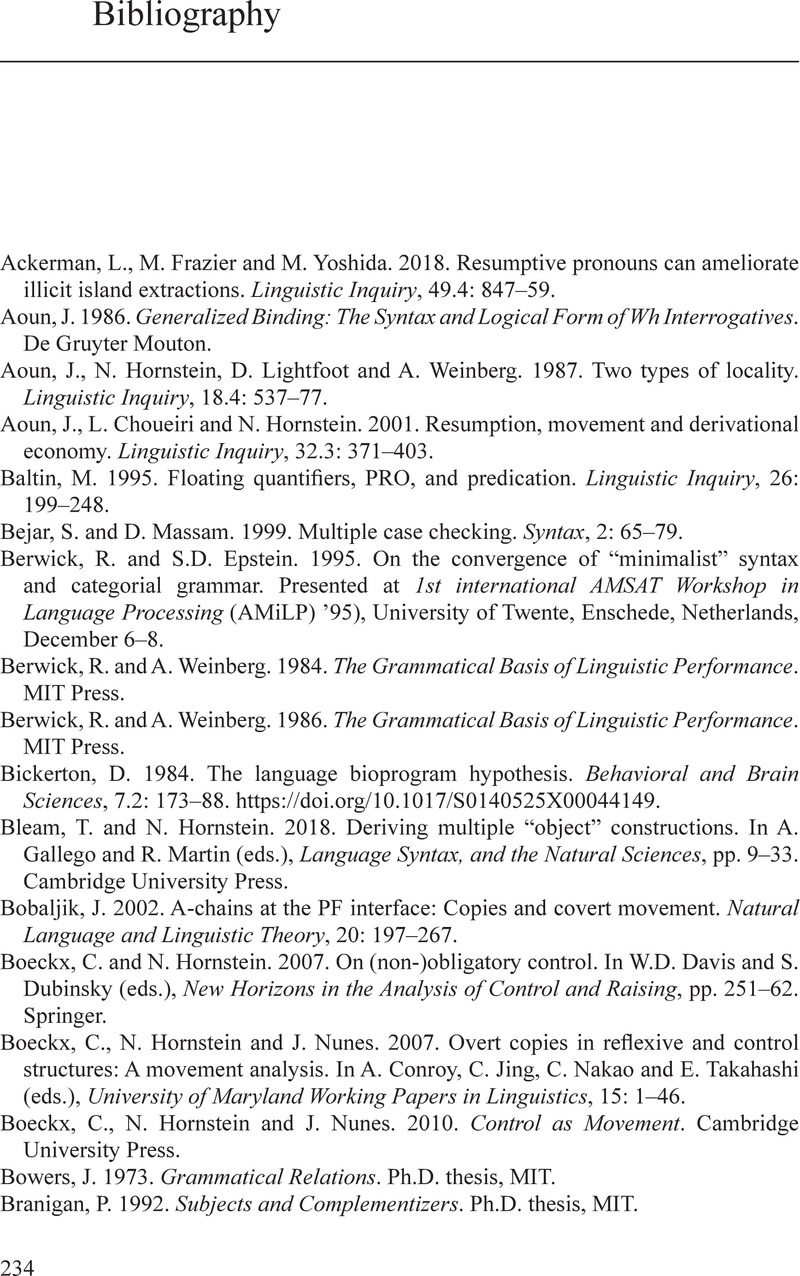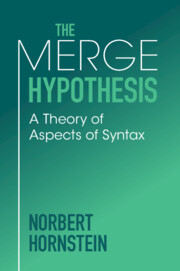Book contents
- The Merge Hypothesis
- The Merge Hypothesis
- Copyright page
- Contents
- Preface
- Abbreviations
- Introduction
- 1 A Whig History of Generative Grammar
- 2 Tools and Particulars
- 3 Adding Labels
- 4 Construal and the Extended Merge Hypothesis (1)
- 5 Construal and the Extended Merge Hypothesis (2)
- 6 A Partial Wrap-Up and Segue
- 7 Labels
- 8 Odds and Ends
- 9 Conclusion
- Bibliography
- Index
- References
Bibliography
Published online by Cambridge University Press: 15 February 2024
- The Merge Hypothesis
- The Merge Hypothesis
- Copyright page
- Contents
- Preface
- Abbreviations
- Introduction
- 1 A Whig History of Generative Grammar
- 2 Tools and Particulars
- 3 Adding Labels
- 4 Construal and the Extended Merge Hypothesis (1)
- 5 Construal and the Extended Merge Hypothesis (2)
- 6 A Partial Wrap-Up and Segue
- 7 Labels
- 8 Odds and Ends
- 9 Conclusion
- Bibliography
- Index
- References
Summary

- Type
- Chapter
- Information
- The Merge HypothesisA Theory of Aspects of Syntax, pp. 234 - 239Publisher: Cambridge University PressPrint publication year: 2024



